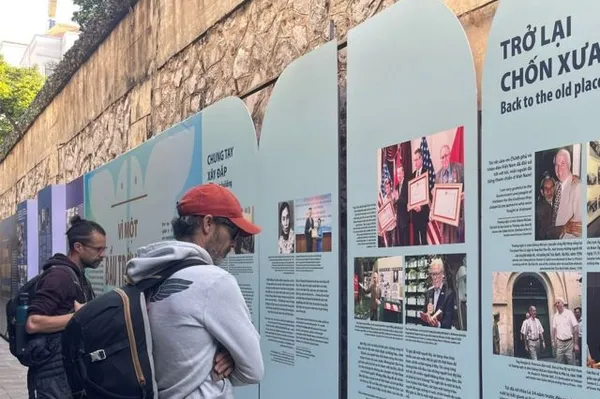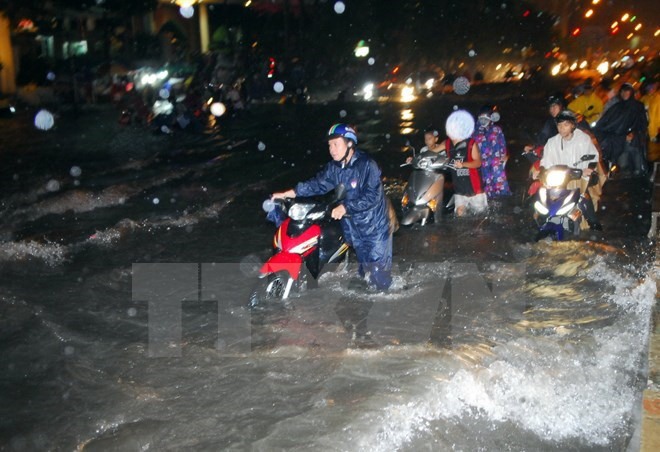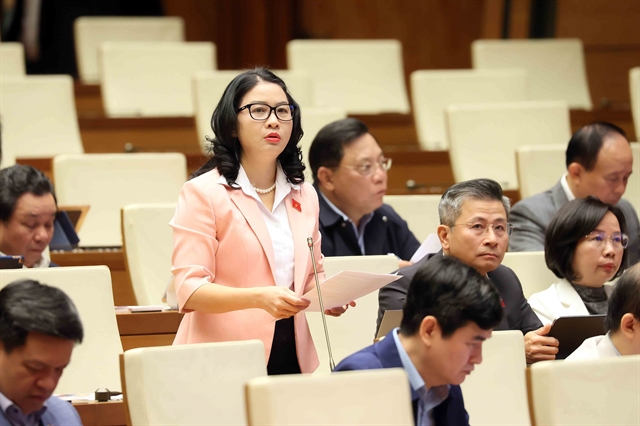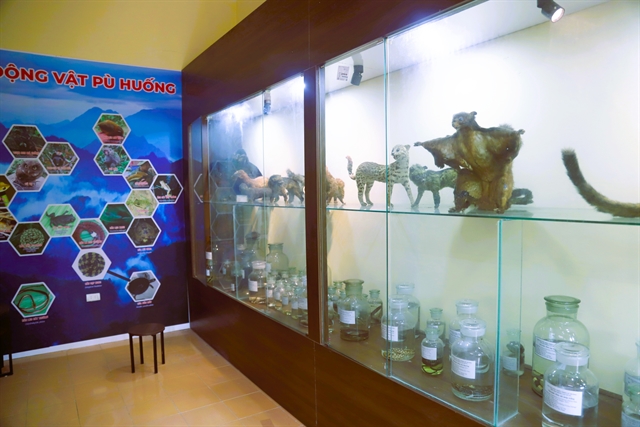 Society
Society

The planned multi-trillion đồng flood-prevention project in HCM City is expected to resume soon after being delayed since late April last year, said the investor.
 |
| Flooding on Nguyễn Hữu Cảnh Street in HCM City’s Bình Thạnh District. The city’s planned multi-trillion đồng flood-prevention project is expected to resume work soon after nearly a 10-month delay. VNA/VNS Photo Mạnh Linh |
HCM CITY — The planned multi-trillion đồng flood-prevention project in HCM City is expected to resume soon after being delayed since late April last year, said the investor.
Nguyễn Tâm Tiến, CEO of city-based Trung Nam Group, said if the HCM City People’s Committee handed over the land early, the project would be completed this year.
“I am trying to complete necessary preparation for the project to restart immediately after the Lunar New Year holiday,” he said.
The land plots in districts 7, 8, Bình Chánh and Nhà Bè have not been handed over, delaying the project.
While waiting to hand over the land, the investor has had to rent land from residents to ensure construction progress.
At the end of last year, Trần Vĩnh Tuyến, vice chairman of HCM City People’s Committee, directed agencies to ensure the progress and quality of the project.
In particular, the Steering Centre of the Urban Flood Control Programme was asked to speed up the disbursement of loans for the project.
The first phase of the flood prevention project worth nearly VNĐ10 trillion (US$430.5 million) was suspended in April last year.
The project is expected to handle tide-related floods and lessen climate change consequences in a vulnerable 570-square-kilometre urban section inhabited by around 6.5 million people, nearly half of the city’s population.
The HCM City People’s Committee is responsible for the project’s investment and efficiency, implementation and problem-solving.
This is the largest and most expensive flood prevention construction project ever planned for HCM City. It started in June 2016 and is expected to be built over the next three years.
The project is intended to solve tidal and urban flooding.
Under the project, six tide-control gates will be built in Bến Nghé, Tân Thuận, Phú Xuân, Mương Chuối, Cây Khô and Phú Định.
In addition, three pumping stations will also be built in Bến Nghé, Tân Thuận and Phú Định. Around 7.8 km of the dyke has been built along the Sài Gòn River.
More than 300 households with 1,500 people have been removed to make way for the construction.
Delayed project
The project was suspended in late April after a supervisory consultant found that the investor had used Chinese steel for part of the project instead of steel from G7 countries, which was required in the contract signed between the city and the private investor from Việt Nam.
The project’s supervisor discovered that the investor had mostly used less expensive steel that was made in China, instead of steel meeting Japanese standards or manufactured in G7 countries.
However, Tiến , CEO of Trung Nam Group, said the replacement was authorised, while the city’s Department of Agriculture and Rural Development, which has the right to assess the plan, said the change was to ensure that flood-prevention structures meet construction standards.
The project is 72 per cent complete, but the stoppage led to losses of more than VNĐ200 billion ($8.57 million) to the firm, he said.
This was not the first time the project had been temporarily halted.
In late February last year, the project was delayed because residents in the area had to be relocated.
Last August, HCM City asked for guidance from the central government on how to move on with the project, and the government said it was for the city to decide.
Sixty per cent of HCM City floods at high tide and 70 per cent of HCM City land is sinking. Climate change, urbanisation and higher tides on lower lands all make flooding a major challenge for the city.
HCM City will need up to VNĐ97.3 trillion ($4.38 billion) for flood prevention projects by 2020, city officials have said. — VNS




